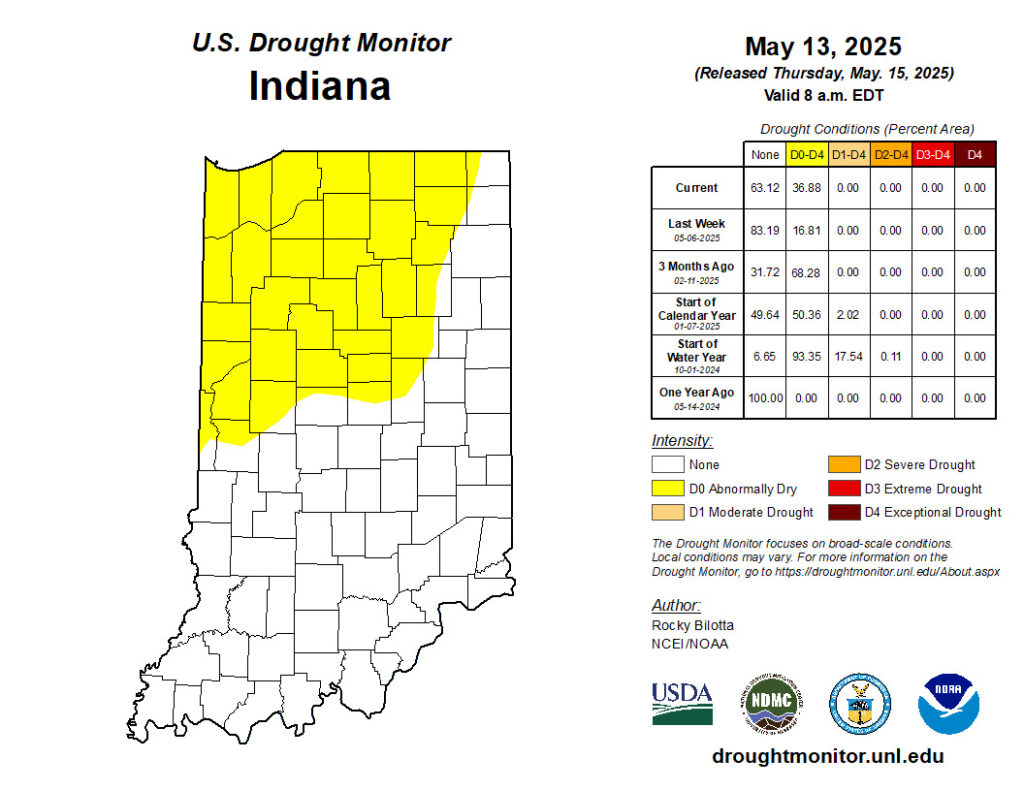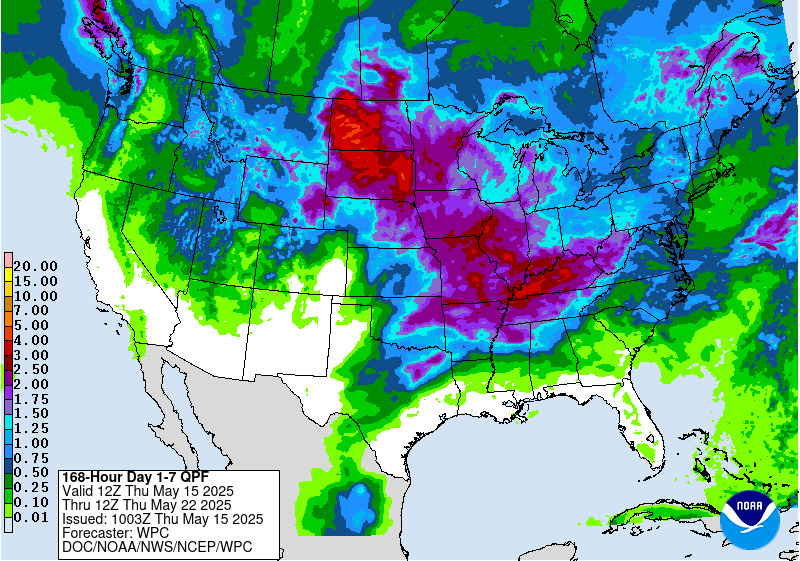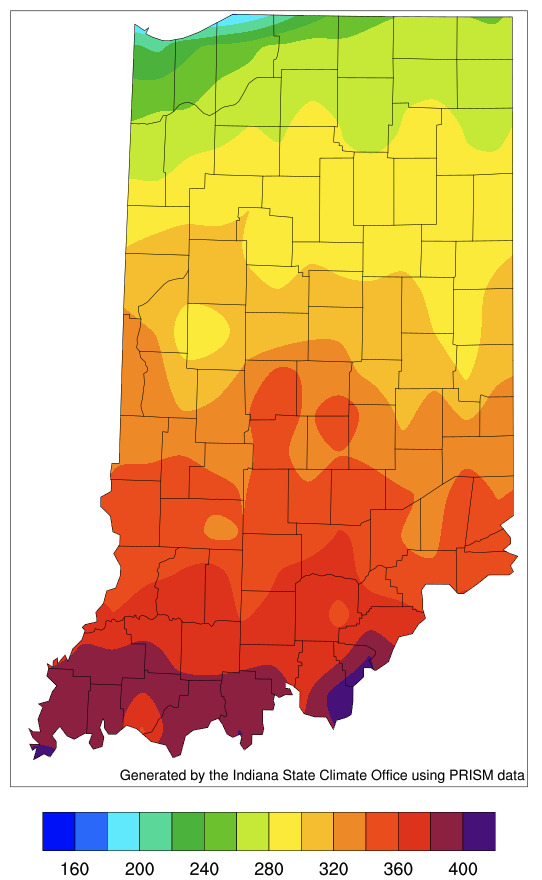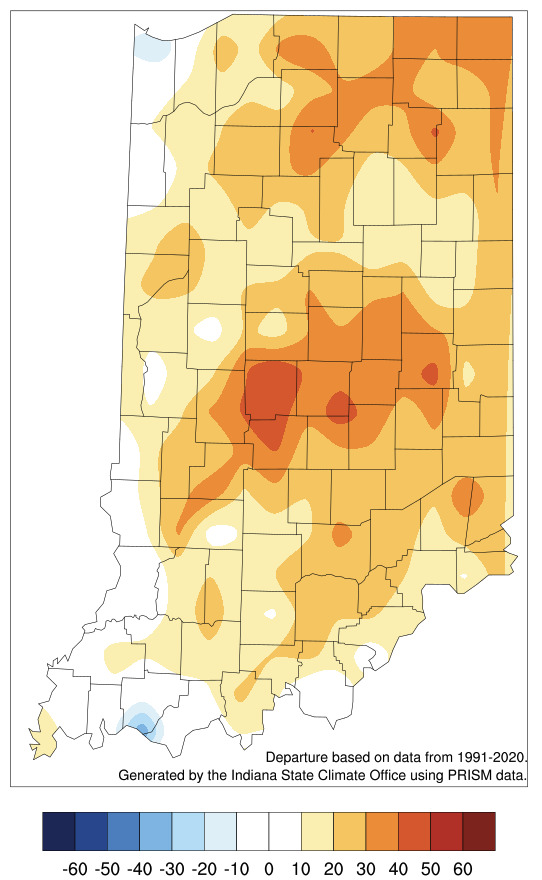The last few weeks have been on the drier side, particularly for northwestern and west-central Indiana (Figure 1). While temperatures have been seasonal, they are still gradually increasing as we approach summer. Therefore, evapotranspiration rates are starting to increase. This has resulted in the U.S. Drought Monitor classifying much of northern Indiana as Abnormally Dry (D0) (Figure 2). Technically, this is not drought, but more a cautionary tale that conditions are drying. The National Weather Service predicts that around two inches of rain will fall across the western and southern parts of the state over the next seven days (Figure 3). A little over half of this will likely come at the end of this week, followed by a break for early next week, closing with another round of decent precipitation next Tuesday-Thursday. It is too early to know if this will be enough to eliminate the Abnormally Dry (D0) areas in our state, but it should not degrade things into official drought status.
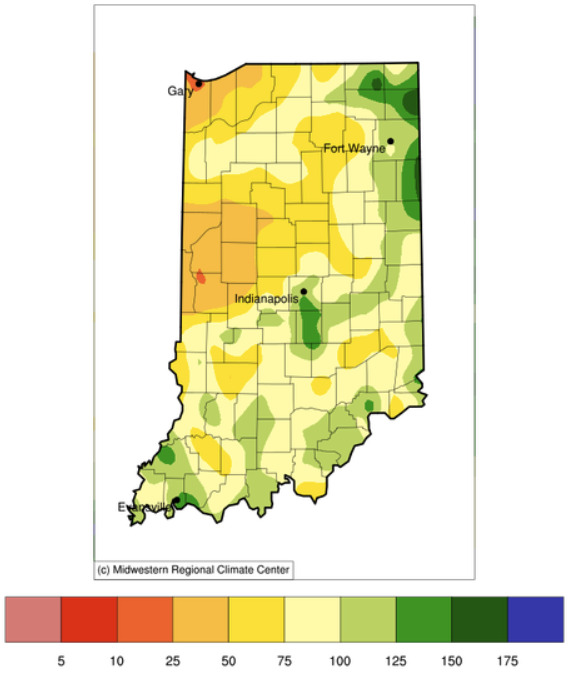
Figure 1. Precipitation from May 1 – 14, 2025, represented as a percentage of the 1991-2020 normal amounts for that period.
Another thing that will help stave off drought is that the National Climate Prediction Center favors below-normal temperatures for the last few weeks of May. There is no concern at this time for freezing temperatures, but it should keep temperatures pleasant with lower evapotranspiration rates. Climate outlooks for June are slightly favoring above-normal temperatures across Indiana, with above-normal precipitation possible for our eastern counties. The 3-month (June-July-August) outlook is slightly favoring above-normal temperatures with no statistically significant guidance about precipitation.
Accumulated modified growing degree days (50°F/86°F) (MGDD) since April 15th (Figure 4) are running around 10-50 units above normal (Figure 5). With the cooler climate outlooks for the rest of this month, expect that pattern of near-normal MGDD accumulations to continue.
